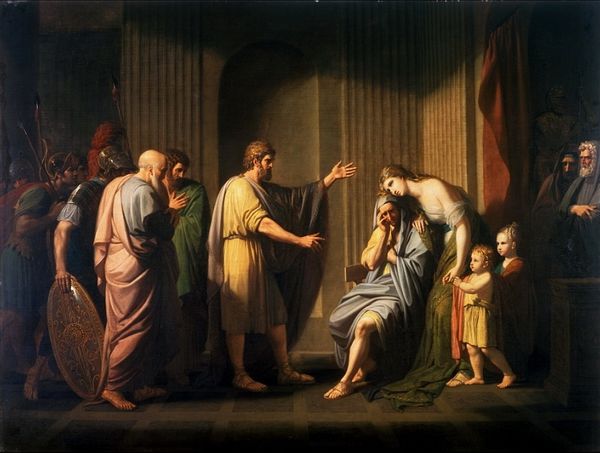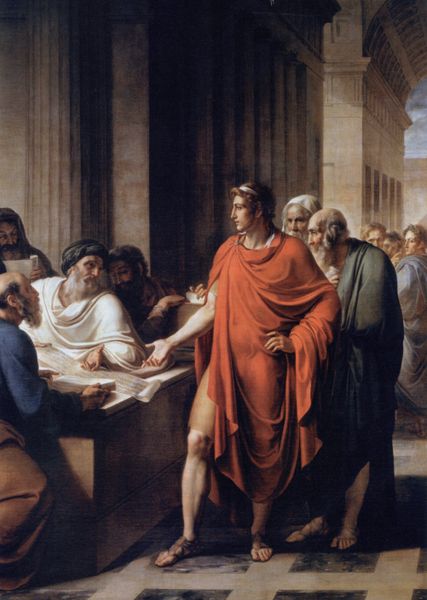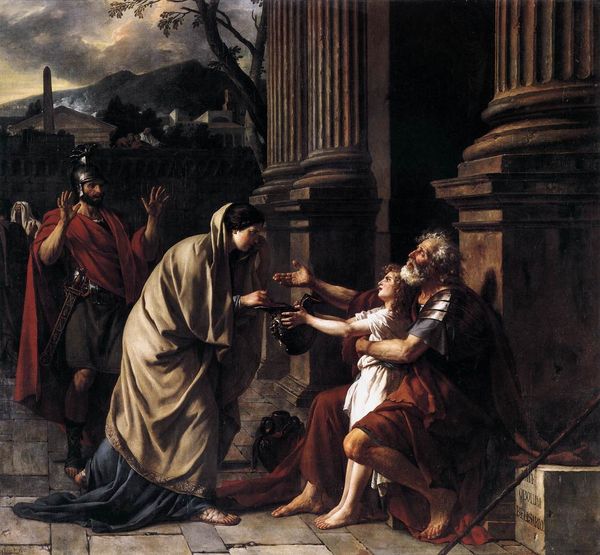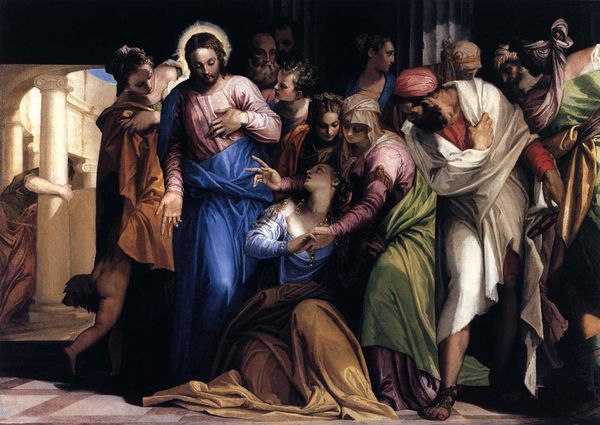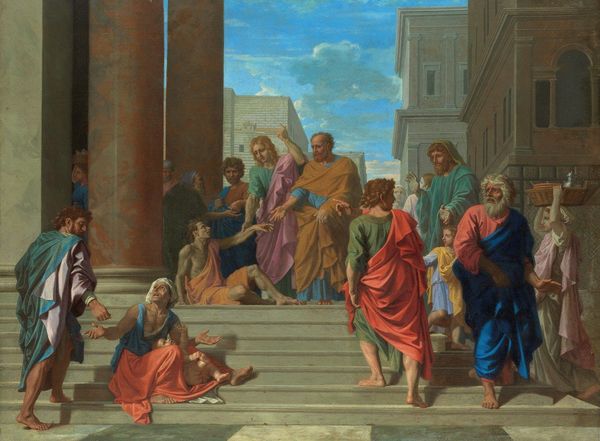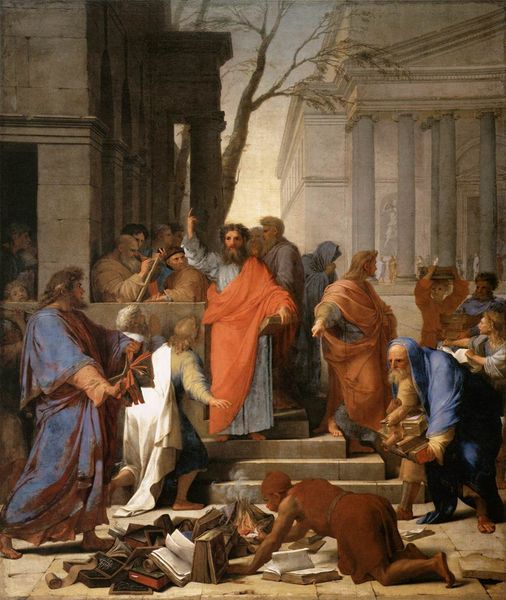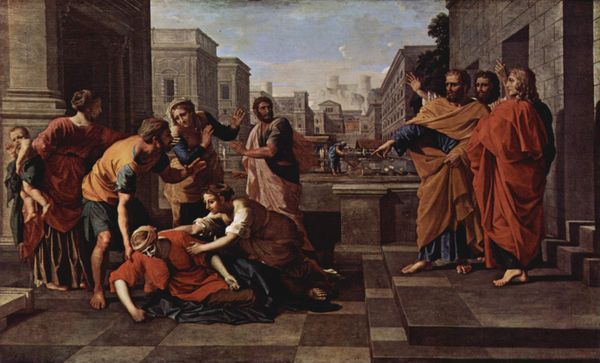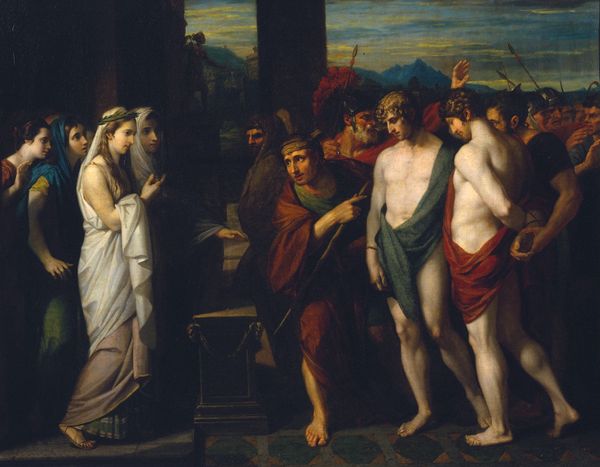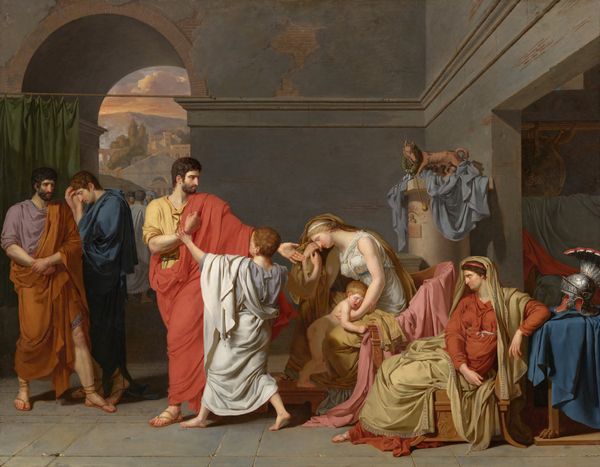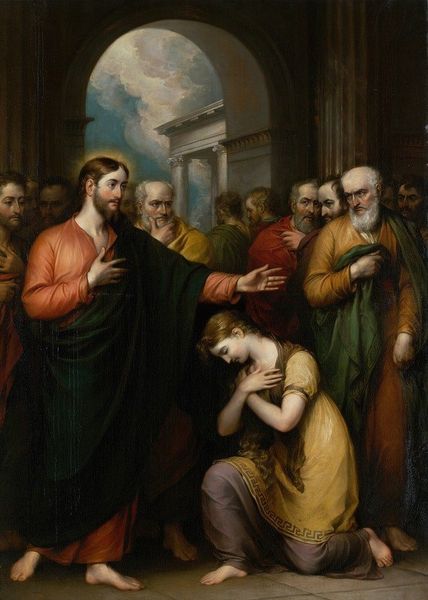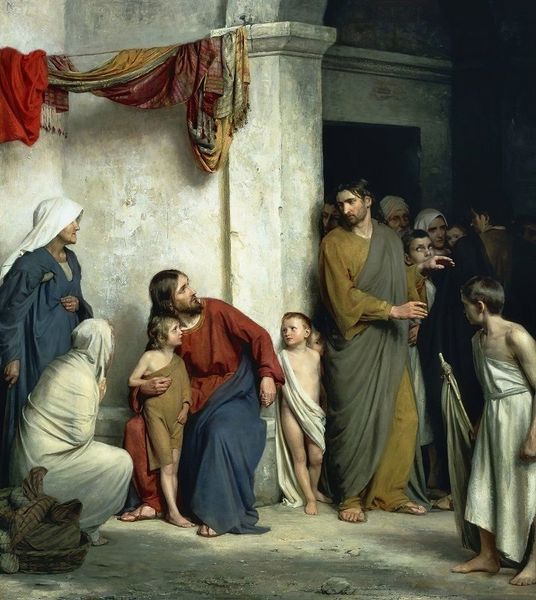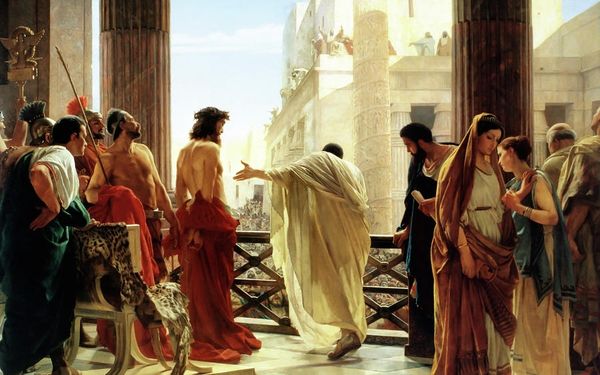
painting, oil-paint
#
narrative-art
#
painting
#
oil-paint
#
figuration
#
romanticism
#
history-painting
Dimensions: 33 x 41 cm
Copyright: Public domain
Curator: Alexandre Cabanel’s "Oedipus Bids Farewell to Jocasta," created with oil paint in 1843, presents a scene of intense emotion. It's hard to ignore the melodrama! What strikes you most about it? Editor: Well, the scene is quite chaotic, everyone's reaction seems heightened. I guess, how might the materials Cabanel chose—the oil paint specifically—influence the story being told? Curator: Oil paint allowed Cabanel a certain richness in depicting textures and conveying the heavy drapery associated with wealth and power. Consider the societal context. History paintings like this, displayed in salons, were essentially commodities. The very labor involved in its creation, the price of materials, everything points to the patronage system that defined art production then. It isn't just a study in human emotion; it's a study in the material conditions that enable such expressions. What do you make of the historical elements informing production? Editor: So, beyond the narrative, the materiality itself—the cost and labor embedded in it—speaks to the artist's role within that system? It's not just about illustrating a story, it's about demonstrating skill and appealing to a wealthy patron through expensive materials and hours of painstaking work. Curator: Exactly! We often divorce the emotional impact from the social and economic systems within which it's created, but consider that painting production sustained workshops full of apprentices and suppliers who created canvases, paint and brushes. Seeing art through a materialist lens opens up questions about labour. Editor: That’s fascinating. I always focused on the tragic figures themselves, not the larger ecosystem that made their portrayal possible. Thanks! Curator: My pleasure! Examining those networks shifts the focus away from solely authorial intention, making for richer interpretation of art.
Comments
No comments
Be the first to comment and join the conversation on the ultimate creative platform.
